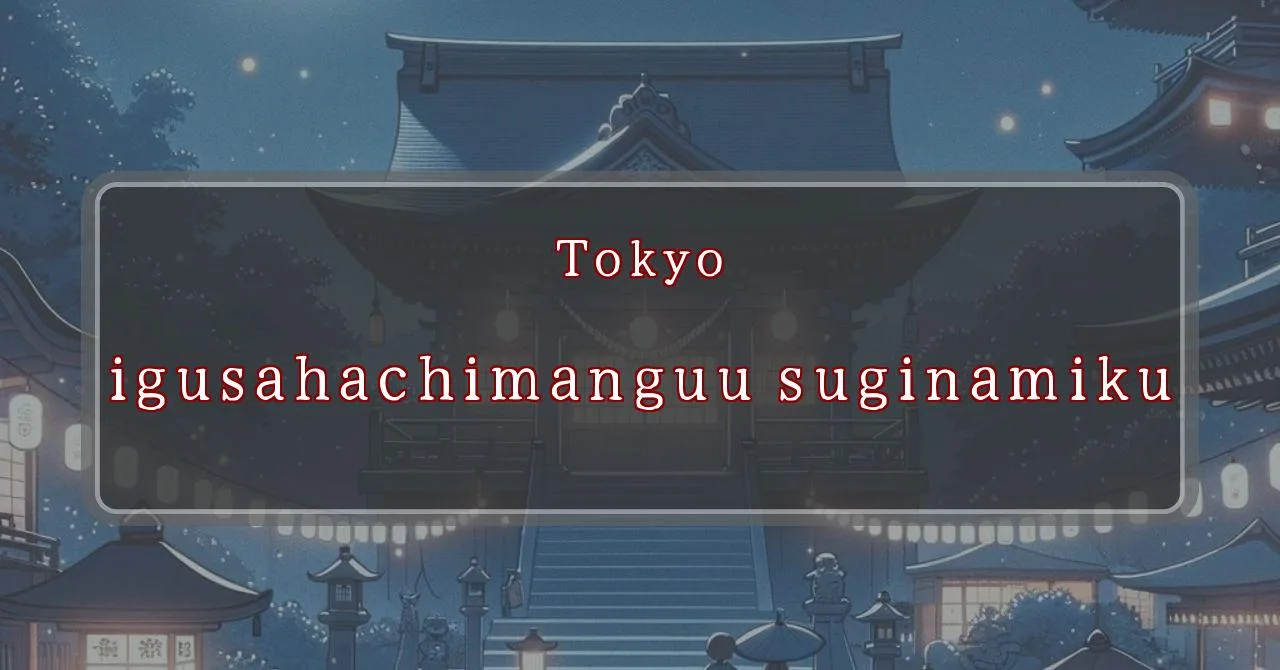Enchanting shrine festival with 300 years of history
Basic Information
Igusa Hachimangu Shrine is a Shinto shrine located in Zenpukuji, Suginami Ward, Tokyo, Japan.
- Address: 1-33-1 Zenpukuji, Suginami-ku, Tokyo 167-0041
- Phone Number: 03-3399-8133
- Access: 14-minute walk from Kami-Shakujii Station on the Seibu Shinjuku Line
- Festival Days: September 30th (Mon) to October 1st (Tue), 2024
Main Events and Attractions of the Festival
The Igusa Hachimangu Shrine Festival is a lively and colorful event that attracts many visitors each year. The main events and attractions of the festival include:
Mikoshi Procession
The highlight of the festival is the mikoshi procession, which takes place on the second day of the festival. A mikoshi is a portable shrine that is carried through the streets by a team of people. The mikoshi of Igusa Hachimangu Shrine is particularly large and impressive, and it is carried by a team of over 100 people.
Kagura Performance
Kagura is a traditional Japanese dance and music performance that is often performed at Shinto shrines. During the Igusa Hachimangu Shrine Festival, kagura performances are held on both days of the festival. The performances are typically performed by young women dressed in colorful costumes, and they tell stories from Japanese mythology.
Food Stalls
No Japanese festival is complete without food stalls, and the Igusa Hachimangu Shrine Festival is no exception. There are many food stalls set up around the shrine, selling a variety of delicious Japanese foods, such as yakitori, takoyaki, and okonomiyaki.
Games and Activities
There are also a number of games and activities for children at the festival. These include traditional Japanese games such as ring toss and goldfish scooping, as well as more modern games such as face painting and balloon animals.
Blessings and Deities
Igusa Hachimangu Shrine is dedicated to the deity Hachiman, the god of war and archery. Hachiman is also revered as the protector of warriors and the guardian of the nation. The shrine is said to have been founded in the 11th century by Minamoto no Yoritomo, the first shogun of the Kamakura shogunate. Yoritomo prayed to Hachiman for victory in battle, and after he achieved his goal, he built the shrine to express his gratitude.
- Deity: Hachiman, the god of war and archery
- Blessings: Victory in battle, protection from harm, good luck in business
Origin and History
The origins of Igusa Hachimangu Shrine are unclear, but it is believed to have been founded in the 11th century by Minamoto no Yoritomo, the first shogun of the Kamakura shogunate. Yoritomo prayed to Hachiman for victory in battle, and after he achieved his goal, he built the shrine to express his gratitude. The shrine was originally located in a different part of Suginami Ward, but it was moved to its current location in 1670.
- Founded: 11th century
- Founder: Minamoto no Yoritomo
- Original location: Different part of Suginami Ward
- Current location: 1-33-1 Zenpukuji, Suginami-ku, Tokyo 167-0041
Tips and Notes for Visitors
Here are some tips and notes for visitors to the Igusa Hachimangu Shrine Festival:
- The festival is held on September 30th and October 1st each year.
- The main events of the festival are the mikoshi procession, the kagura performance, and the food stalls.
- The festival is very popular, so it is important to arrive early to avoid crowds.
- There is a parking lot available for visitors, but it is limited, so it is best to use public transportation.
- The shrine is open every day from 9:00 AM to 5:00 PM.
Parking Information
There is a parking lot available for visitors to the Igusa Hachimangu Shrine Festival, but it is limited. It is best to use public transportation to get to the festival.
- Parking lot location: 1-33-1 Zenpukuji, Suginami-ku, Tokyo 167-0041
- Number of parking spaces: Limited
- Parking fee: Free
Popular Stalls and Food Carts in Recent Years
| Type of Stall | Description |
|---|---|
| Takoyaki | A staple at Japanese festivals. Characterized by a crispy outside and a creamy inside. |
| Jaga Butter | A simple yet popular snack of hot potatoes lavishly topped with melted butter. |
| Baby Castella | Small castella cakes, sweet and fluffy treats enjoyed by children and adults alike. |
| Grilled Ayu with Salt | Fresh ayu fish grilled whole with salt, a savory taste of Japanese summer. |
| Shaapin | A unique gourmet item influenced by foreign cuisine, with a chewy skin wrapping the filling. |
| Okonomiyaki | A Japanese grilled dish where you often choose your own ingredients for a personalized flavor. |
| Cotton Candy | A fluffy, sweet snack that’s extremely popular with children. |
| Chocolate Banana | A banana coated in chocolate, a fun and visually appealing dessert. |
| Kushiyaki | Various types of ingredients skewered and grilled, an easy-to-enjoy snack. |
| Yakisoba | Fried noodles mixed with a special sauce, a fast food favorite in Japan. |



